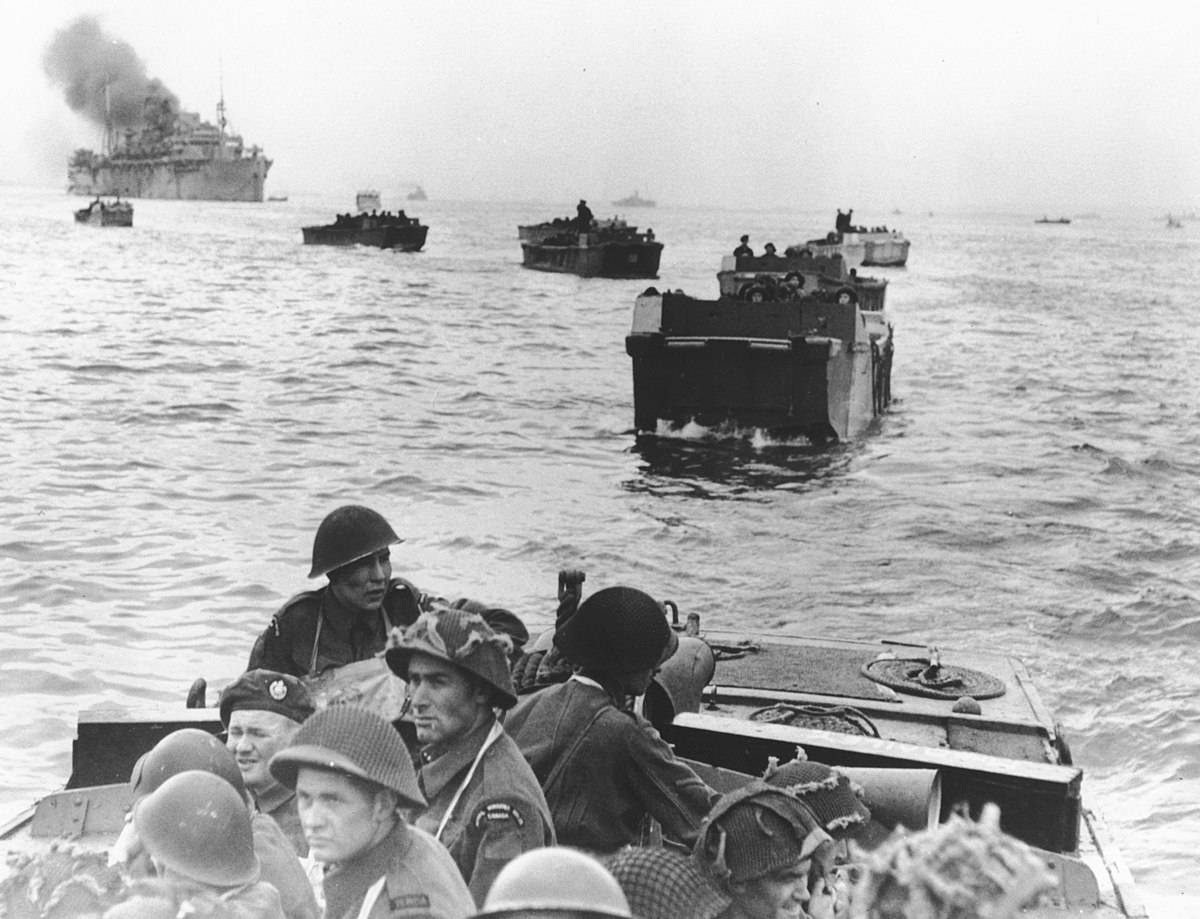
Canada in World War II
Central EuropeCanada's involvement in the Second World War began when Canada declared war on Nazi Germany on September 10, 1939, delaying it one week after Britain acted to symbolically demonstrate independence. Canada played a major role in supplying food, raw materials, munitions and money to the hard-pressed British economy, training airmen for the Commonwealth, guarding the western half of the North Atlantic Ocean against German U-boats, and providing combat troops for the invasions of Italy, France and Germany in 1943–45.
Of a population of approximately 11.5 million, 1.1 million Canadians served in the armed forces in the Second World War. Many thousands more served with the Canadian Merchant Navy. In all, more than 45,000 died, and another 55,000 were wounded. Building up the Royal Canadian Air Force was a high priority; it was kept separate from Britain's Royal Air Force. The British Commonwealth Air Training Plan Agreement, signed in December 1939, bound Canada, Britain, New Zealand, and Australia to a program that eventually trained half the airmen from those four nations in the Second World War.
The Battle of the Atlantic began immediately, and from 1943 to 1945 was led by Leonard W. Murray, from Nova Scotia. German U-boats operated in Canadian and Newfoundland waters throughout the war, sinking many naval and merchant vessels. The Canadian army was involved in the failed defence of Hong Kong, the unsuccessful Dieppe Raid in August 1942, the Allied invasion of Italy, and the highly successful invasion of France and the Netherlands in 1944–45.
On the political side, Mackenzie King rejected any notion of a government of national unity. The 1940 federal election was held as normally scheduled, producing another majority for the Liberals. The Conscription Crisis of 1944 greatly affected unity between French and English-speaking Canadians, though was not as politically intrusive as that of the First World War. During the war, Canada became more closely linked to the U.S. The Americans took virtual control of Yukon in order to build the Alaska Highway, and were a major presence in the British colony of Newfoundland with major airbases. After the start of the war with Japan in December 1941, the government, in cooperation with the U.S., began the Japanese-Canadian internment, which sent 22,000 British Columbia residents of Japanese descent to relocation camps far from the coast. The reason was intense public demand for removal and fears of espionage or sabotage. The government ignored reports from the RCMP and Canadian military that most of the Japanese were law-abiding and not a threat.
